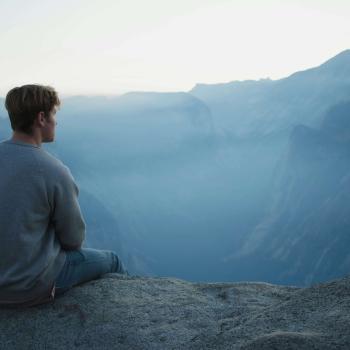Are you busy? In today’s modern world, it seems we all are. We cram our lives with so much busyness that we, in effect, become spiritually lazy. We don’t allot the time, or have the will power, to engage in a regular spiritual practice—including the recommended two daily meditation sessions that can lead to greater mindfulness (the ability to focus our attention on the present moment).
There may be an easier way to be mindful and it comes from Google. Not through an online search, but via a former Google engineer who has taught his ideas on mindfulness to thousands of the company’s employees. His name is Chade-Meng Tan and in his book Search Inside Yourself, he explains the biggest obstacles many of us face in being more mindful.
The first obstacle some of us face is that we try too hard. Tan explains that meditation is like trying to fall asleep, in that it shares one important feature: they both rely on letting go. The better you are at letting go, the easier it is to meditate and fall asleep. The key is to get into a relaxed state, which is often easier said than done.
Tan offers tips on meditation technique, which mirrors an approach I wrote about here and here, and also offer us some wise advice: Start small. He writes of a single step we can start taking today to help us live a more relaxed life and it involves our breathing.
Take one breath a day. Commit to one mindful breath a day. Just one. Breathe in and breathe out mindfully, and your commitment for the day is fulfilled; everything else is a bonus.
Is that it? Yes, for starters that’s all you need to do. Because Tan knows that when we stop to become conscious of our breath, and take that deep breath in and out, we see that is has the immediate effect of giving us a momentary sense of calm. It’s an effect that can then be repeated throughout the day, especially when we feel overwhelmed or stressed.
Which brings us to meditation. While Tan talks to meditation techniques similar to ones I have discussed here and here, he also has a fix for those of us who can’t find 20-minute block to sit down and do a formal meditation. It’s called a walking or moving meditation and we can work it into our daily comings and goings, whether we do it while walking from our car to the office or supermarket, or anytime we take a stroll from point A to point B.
Tan reminds us that when walking we should “bring full moment-to-moment attention to every movement and sensation in the body, and every time attention wanders away, just gently bring it back” to walking. Here is his approach, slightly modified and broken down into 5 easy steps.
-
Start by standing still. Become aware of the pressure on the feet as they touch the ground. Become aware of your whole body touching the ground.
-
Take a step forward. Lift one foot mindfully, move it forward mindfully, plant it down in front of you mindfully, shift your weight to this foot mindfully. Repeat this process with the other foot.
-
If you like, when lifting and planting each foot, you can repeat silently “moving, moving, moving.” This becomes your mantra.
-
If you like, you can synchronize your movement with your breathing. When moving one leg, breath in, when moving the other leg, breathe out.
-
When you stop, become mindful of your body in a standing position. You can repeat silently to yourself, “standing, standing, standing.”
For the more ambitious, walking meditation can also become a running (“step, step, step”) meditation or swimming (“stroke, stroke, stroke”) meditation—opportunities to put our mind at rest and relax into the motion of the body. It becomes the equivalent of a refreshing nap, recharging our brains with the added benefit of strengthening our hearts.
One final note: even a small amount of meditation during the day can help. Just like Tan recommends we start our mindfulness practice with a single breath, you can start your meditation practice by devoting a single minute to the practice. These micro-meditation sessions, when repeated throughout the day, can have the same positive effects as longer sessions.













